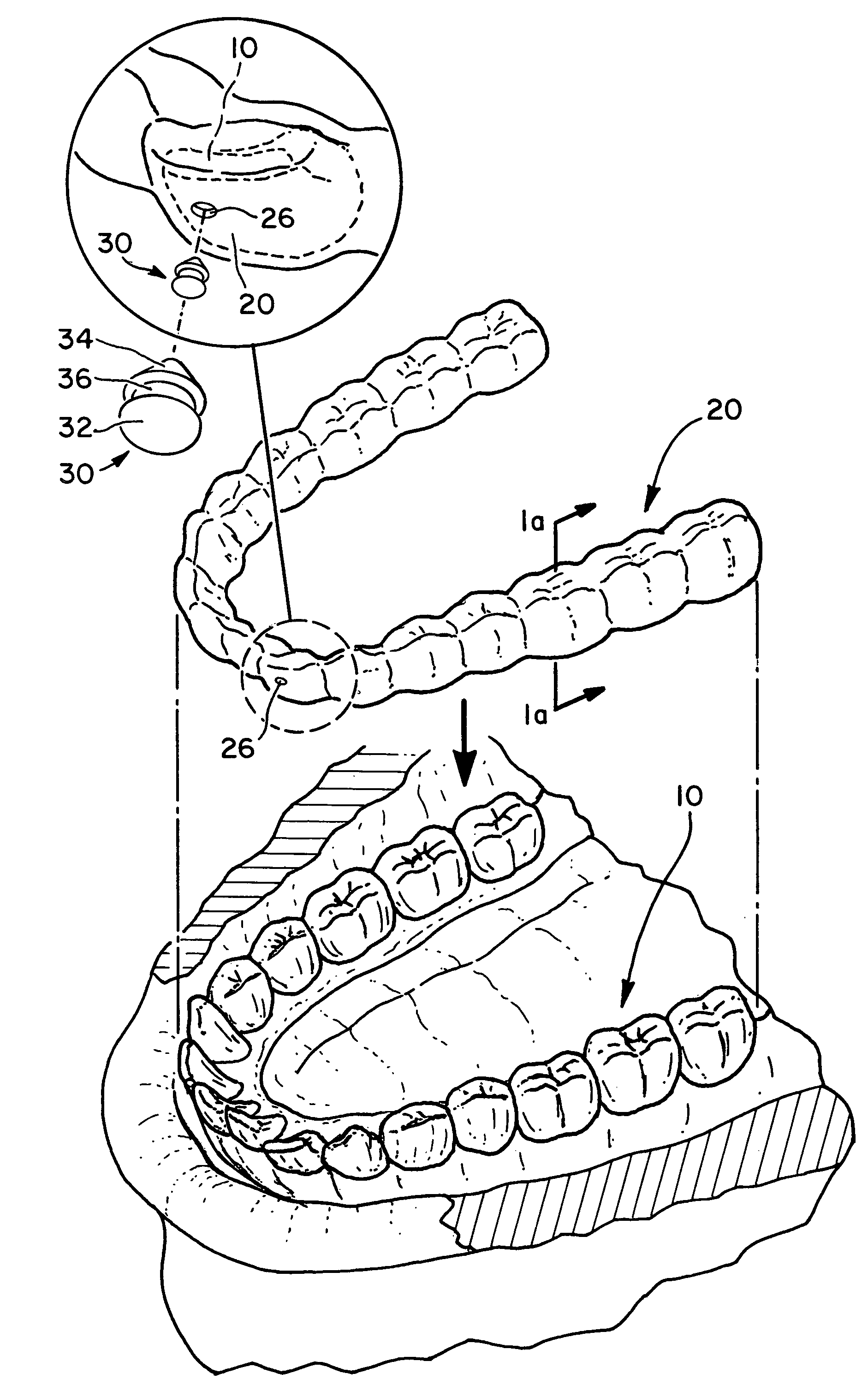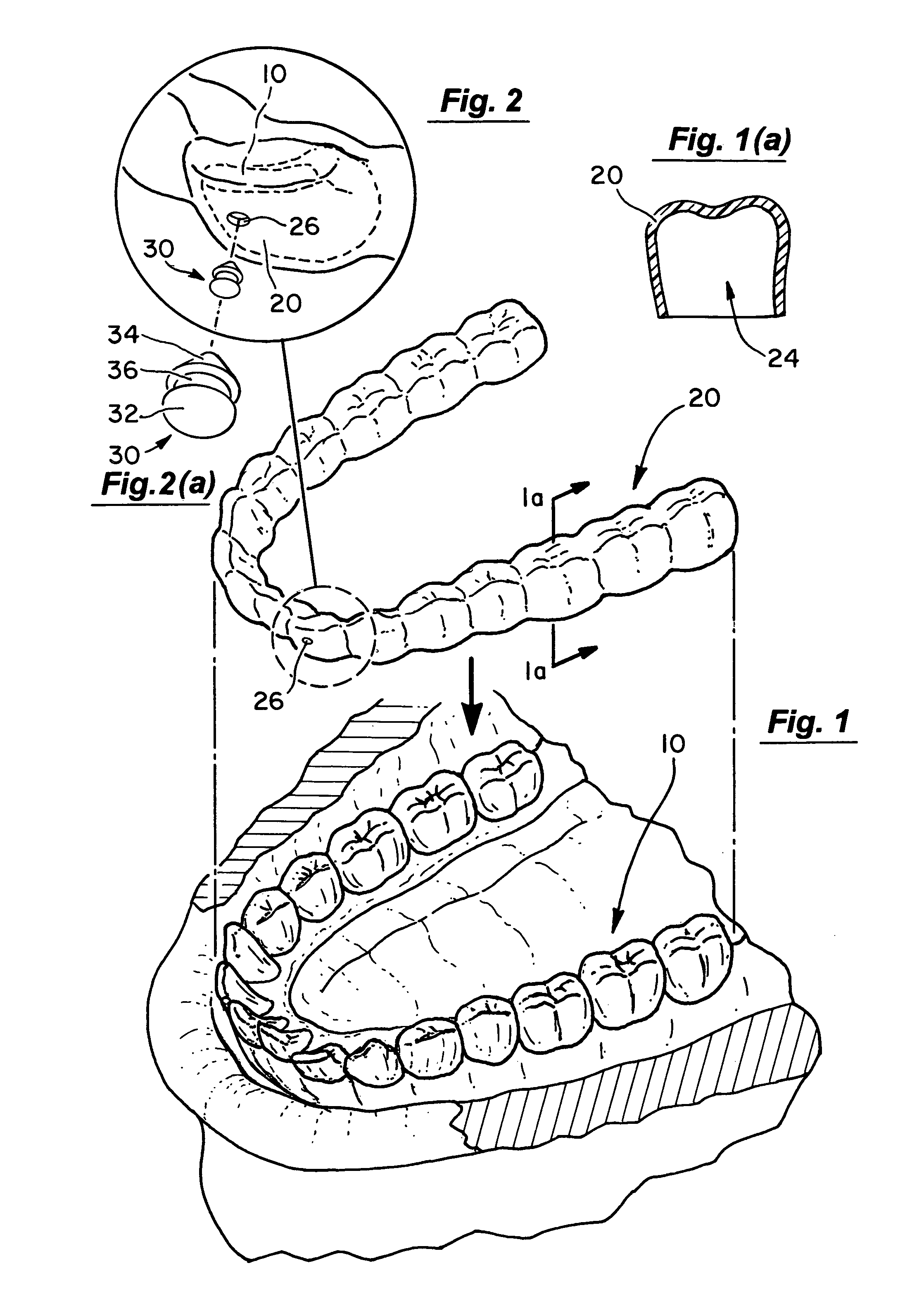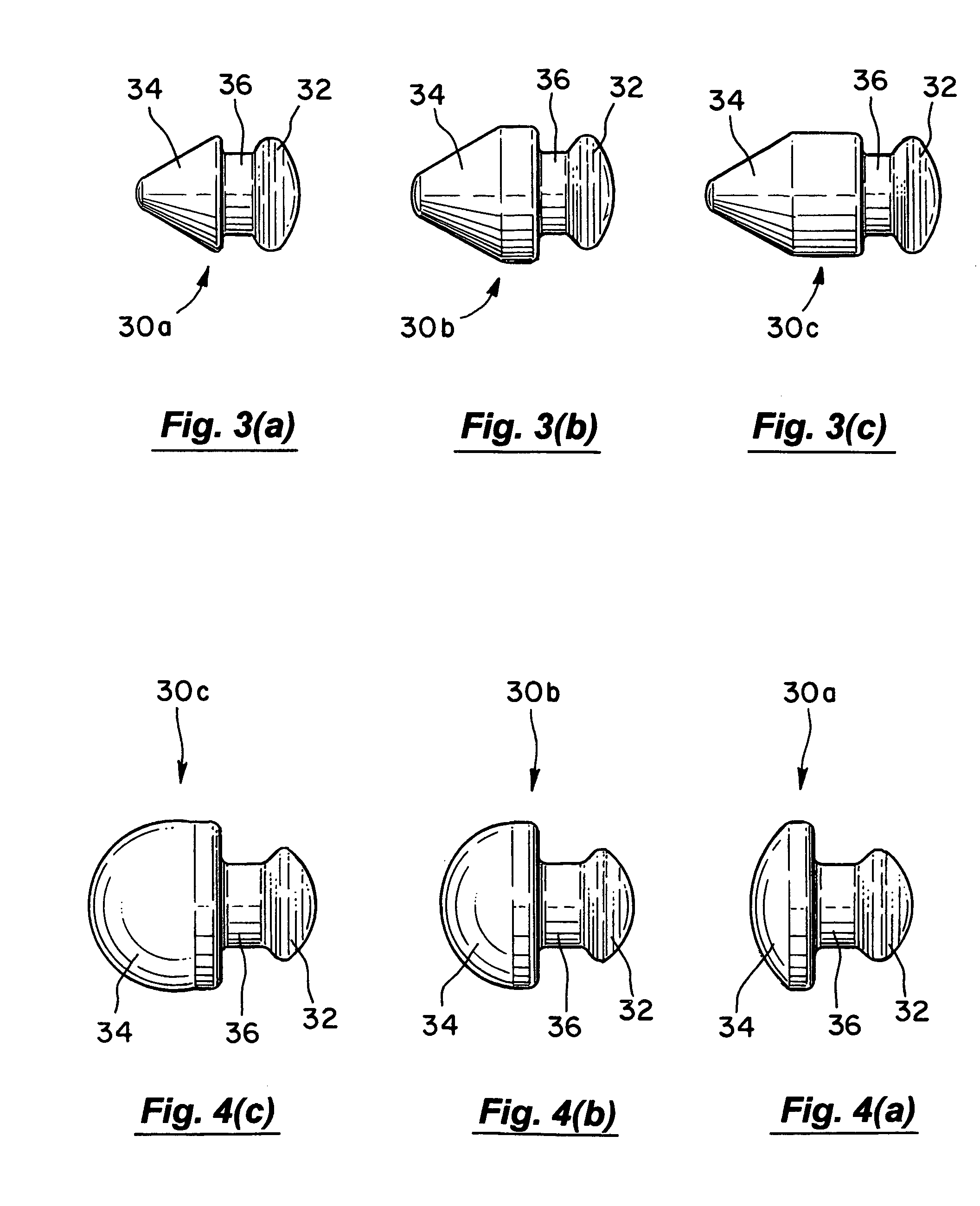Automated method for producing improved orthodontic aligners
a technology of automatic production and aligner, applied in the field of orthodontics, can solve the problems of one-piece unsightly appliances, human error in the process of direct (manual) bonding, and drop of conventional procedures used in the past,
- Summary
- Abstract
- Description
- Claims
- Application Information
AI Technical Summary
Benefits of technology
Problems solved by technology
Method used
Image
Examples
Embodiment Construction
[0083]FIG. 16 is a flowchart providing a general overview of the present invention. To summarize, the present invention is a methodology to produce orthodontic aligners using a CAD system to modify a digital model of the patient's oral anatomy to incorporate features that accommodate attachment of aligner auxiliaries to the completed aligner(s). The present invention represents a convergence of the various advances made in aligner-based orthodontic treatment as may be accomplished by a CAD technician in the setting of a commercial orthodontic service center.
[0084]Initially, the relevant portions of the patient's oral anatomy are scanned to create a digital model in a format suitable for viewing and manipulation via a CAD system. As previously discussed, impressions of at least a portion of the patient's dental anatomy can be taken in the orthodontist's office using alginate, PVS or other conventional dental impression materials. These impressions are then used to make conventional s...
PUM
 Login to View More
Login to View More Abstract
Description
Claims
Application Information
 Login to View More
Login to View More - R&D
- Intellectual Property
- Life Sciences
- Materials
- Tech Scout
- Unparalleled Data Quality
- Higher Quality Content
- 60% Fewer Hallucinations
Browse by: Latest US Patents, China's latest patents, Technical Efficacy Thesaurus, Application Domain, Technology Topic, Popular Technical Reports.
© 2025 PatSnap. All rights reserved.Legal|Privacy policy|Modern Slavery Act Transparency Statement|Sitemap|About US| Contact US: help@patsnap.com



